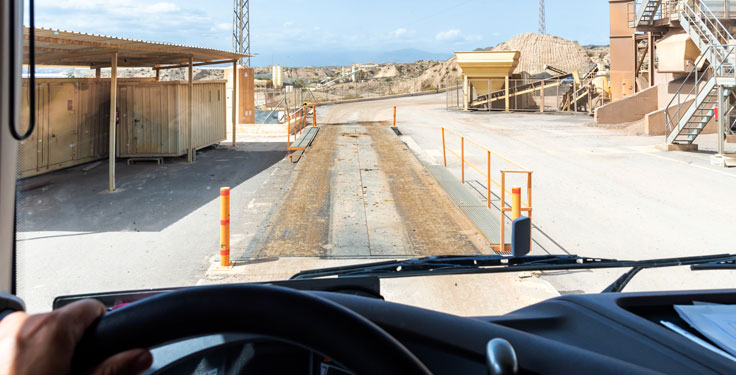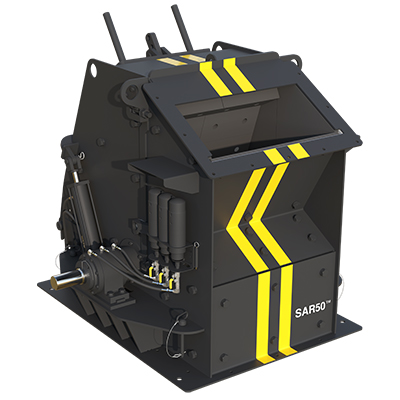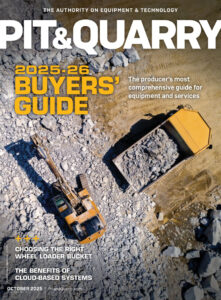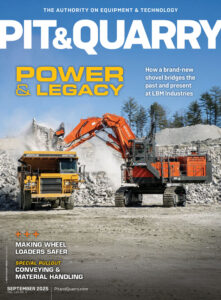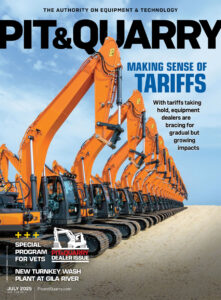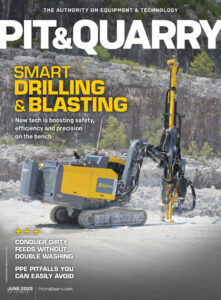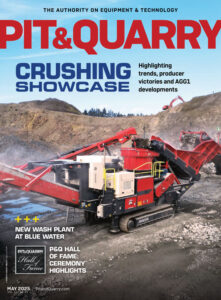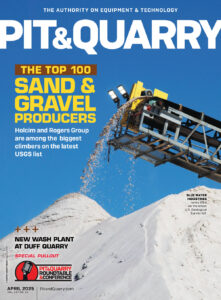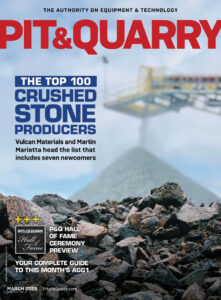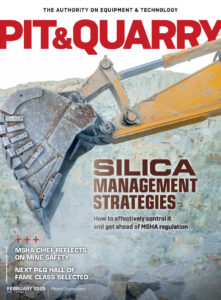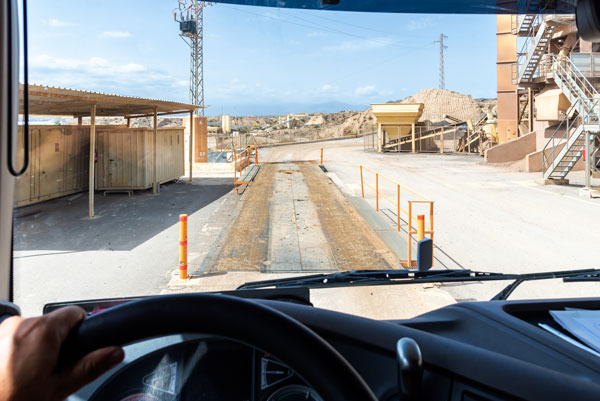
What was your first impression of aggregates as you dug into the industry? Have you seen the industry make gains in your year and a half at Tread, and what is that realization like for producers when they finally see the efficiencies they’ve gained?
You couldn’t pry our software out of a lot of our customers once it goes in.
There are so many little micro efficiencies that even an owner might not think about: the visibility of having data on where a truck was; the route it took; when it hit on site; having scale tickets all aggregated in a singular location so you’re not combing through thousands of scale tickets in an office; you’re not waiting a week for the driver to come drop those tickets off.
I have an incredible amount of respect for our operators, because they’ve figured out a way to make a hard business work. It is [near] impossible to wrangle owner-operators, fleets, brokers, customers. To think that a lot of our customers before we get there are doing things like leaving a voicemail on a pre-recorded line, calling out 200 driver call sheet and schedule times to say: ‘Here’s where you’re going, here’s where your first pickup is.’ And these drivers are calling in waiting to hear their name.
You hear these stories where drivers are last in the line saying: ‘Why did these other five drivers get these loads? Why didn’t I get them?’ Then, the operator starts moving them to the front of the list so they can just hear their name and hang up. So, all of these little workarounds that people are figuring out to make their life work are phenomenal.
We take that whole process and make it digital. It’s a simple push to an application. Every driver just gets their job delivered right to them as soon as it’s ready. That simplicity really blows people’s mind. It’s like: ‘I was spending hours just doing that one thing.’ And now that time is back.
Is this the norm in terms of how dispatch is handled?
There are a few patterns you see in terms of how people solve dispatch. The most common is texting. A quote I heard from a customer a few weeks ago was ‘thunder thumbs.’ It’s what they call their dispatcher, because they’re just sitting their hammering at their cellphone to text all the drivers. There’s also pre-recorded lines and phone calls.
A lot of people will have the big whiteboard, which is still common in paving and construction-use cases to map everything out.
Everyone also has the most intense spreadsheet you’ve ever seen. You’ve got all the loads on the left, all the drivers on the right and then there’s this big matching exercise that needs to happen to make the day work. If one change comes through or it starts raining, then the whole thing gets blown up and you start over again.
Where do you see Tread going, and what additional innovation is coming?
Right now, we’re focusing primarily on bringing workflow into software. That means we do have to build a lot of workflow processes.
We have to be able to in-take orders for our customers; we have to be able to get them out to drivers; we have to build great software for our drivers so they use the application; we need to be able to pay the drivers; we need to be able to batch all that up and turn that information into invoices for customers.
Once we do all that and we have that workflow, it’s really getting into true AI-generated matching and supply-demand forecasting where you will no longer have to do that puzzle-piecing together of a schedule. [Ideally], you can click a button, get an optimized schedule and know that you are saving driven miles, saving fuel, minimizing idle time, getting faster turnarounds to your customers and you’re maximizing the number of loads you can deliver in a day.
When you think about our larger producer customers, they’re operating 100 to 200 trucks – especially during busy season. Some of these guys are doing 400. When you think about a dispatcher’s job, you can’t do that optimization in your head. It’s incredible what dispatchers do. I actually don’t think I could do that job. I have true admiration for the hard work dispatchers do.
But the way that they do it is they’ll take a set of five drivers or a set of five orders and set them up five at a time. They go down the list five at a time, five at a time, five at a time. It works. We know it works. It’s worked for 20 years or 100 years. But do we think that’s optimal?
When you think about the power of having a software system run thousands of options and picking the best one, no human can do that. Those are the things we are really excited about bringing to the industry, giving confidence to logistics teams to help them save miles. And that means we are contributing to their sustainability goals.
When you look at all of the top producers, they have ESG and sustainability-target goals that we want to help them hit. Logistics is a huge part of the equation.
Are the major producers the ones who are receptive to adopting this tech the most, or are you seeing adoption across producer types?
One of the things I was most surprised by when I started was that it really was the large public producers that were driving a lot of change. The reason for that was because they were so acquisitive. They saw this problem on such a massive scale, and they saw that the challenges were really quite similar across locations, plants and sites.
Of course, every operation has its own unique intricacies but, for the most part, they understood that they didn’t know which of their, say, 50 operating companies was the best. Every company was sending different data or a different dashboard – and some aren’t even sending data at all. So, how do you hold that management team accountable? There was starting to be a big push for standardization of data, so we can run and optimize our business.
After that starts to happen at the executive level, it gets pushed down to the operating level, and then it’s demanded of the haulers in the area. That starts to spin this flywheel.
Then, for everyone in the industry, once you’ve got the enterprise companies adopting, you better get on the train or you’re getting left behind. You already had to compete with the biggest company in the space; now you have to do it when they have better software.
Now, the rest of the industry – the ones looking to gain share – have got to fight with urgency to adopt solutions to deliver the customer service to stay in the game.
I do think there’s pretty broad adoption happening across the industry. Our company grew 85 percent year over year in 2023. We’re hoping to surpass that in 2024. We think that trend can continue for a number of years because of how low software adoption is generally in the industry. There’s a lot of room to run and a lot of customers we can drive profitability for.
Related: Four ways to optimize your fleet of trailers

